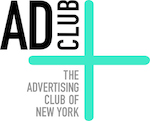The Value of Independent Ad Tech After the Global Crisis
From corporate member Ivan Guzenko, CEO, SmartyAds
Before COVID-19 wreaked havoc on the global economy, ad blockers, changes in privacy regulation (CCPA with GDPR), the third-party cookie shutdown and walled gardens posed the biggest challenges for the ad tech world. When the pandemic took over the world, it made these problems even more acute. In a few months, the ad spend across certain industries has shrunk, and the yield of big publishers has decreased by at least 10%.
Now, ad spend in some industries witnesses massive contraction, and the matter grows worse with walled gardens intensifying pressure on the independent ad tech sector. At the same time, the crisis periods, like the present, are also the best time for innovation. Exactly now, many ad tech companies start to unleash and emphasize the potential of independent ad-tech in order to adjust and thrive in a renewed advertising ecosystem.
Google & Meta Duopoly and Walled Gardens
Currently, Google and Meta account for 20% of advertising costs in the world. Along with Meta and Amazon Google is responsible for 70% of digital ad spending and nearly 99% of advertising market growth. The ad tech industry, exclusively, has 59% of total coverage. By the end of 2020, revenues of these tech giants will reach $77 billion in the U.S only.
Add to these Apple and Netflix and you get the five most expensive and influential companies in the world. FAANG creates an environment of walled gardens that stifles innovation and reduces the number of viable alternatives.
With over 1.5 billion Gmail users and 2.38 billion monthly Meta accounts, it also comes as no surprise that these companies created their own advertising ecosystem, fueled by arrays of user data. An almost exclusive collection of so much personal data enables these companies to dictate ad prices.
Independent ad tech as a separate force
On the other side, there are independent ad tech companies that have been surviving this competition ever since the dawn of programmatic. Trying to stay competitive, independent ad tech companies constantly innovate and develop solutions that can be differentiated with transparency, data ownership and a new level of control over media-spend. That’s why, ever since 2007, corporations were ready to go the extra mile just to acquire their own advertising tech. Back in 2007, Google paid $3.1 billion to acquire a formerly independent DoubleClick online advertising platform – almost twice as much as it paid to buy YouTube video hosting a year later. In the past two years, the number of those companies who have shifted their gaze to this direction increasingly grew.
Large investment funds and media holdings, international advertising, communication groups and even companies standing far from advertising – like Oracle – buy advertising platforms and go in-house. Six months prior to this, Adobe created its own advertising division. The giant bought $ 540 million-worth of TubeMogul platform to sell and measure video ads.
Plus, smaller businesses create joint alliances and partnerships to stay resilient to ad market fluctuations. Such collaborations appeared as a part of the advertising market evolution since they create stronger, more flexible products that are more susceptible to changing needs of the ad tech industry. Independent ad tech competes through innovation and examples of this can be found everywhere; thus, e.g. AdRoll was the first company to bring retargeting functionality to the table. Tapad prepared something that’s called a probabilistic device graph for user identification, Oomph figured out how to turn print publications into rich media ads… and the list goes on.
Importance of independent ad tech in the age of global pandemic
In 2020, the spread of coronavirus reduced global economic growth by half – from 2.9% to 1.5%. Now that advertisers have called off their ad spend and frozen advertising campaigns, more and more companies want to avoid paying third-party service commissions and get their ad campaigns served cheaper and faster.
Nobody needs intermediaries anymore, because everyone looks for a chance to alleviate the influence of the economic crisis. At this stage, this new need changes the landscape of the online advertising market. Agencies and brands learn how to save costs and automate processes. They become independent in order to stay flexible and decide for themselves how to redistribute ad costs across channels where traffic volumes are booming amidst lockdown.
Sure, in the realms when the ad market was divided among large corporations, not every company can afford to step on the grounds of independent advertising. They opt for external, ready-made teams and technologies that can supercharge their core businesses; one concept that makes it fairly easy is white label. With white label’s approach, every company has a chance to cheaply buy technology from a known provider, rebrand it and build a fast-growing business without big operational expenses. With an independent ad tech platform based on white label, publishers can give a go to what’s called “partner publishing” on a big scale. Allying with other publishers that accumulate an equal audience, they can maximize the value of gathered user data, augmenting and growing it, while distributing technology maintenance costs among participants. It is a new level of independence for publishers who don’t want to depend on SSP in their decision-making, as they are free to connect demand partners directly and monetize their data for prices they determine themselves.
To sum up
The walled gardens created by FAANG attracts users, advertisers, publishers, manufacturers of software and app developers to their ecosystem like fish to a coral reef. In the advertising world, one who owns the audience data can decide the game rules, establish advertising prices and even influence data regulations. After the global COVID-19 crisis, we’ll witness the strengthening of the independent ad businesses sector as tech players strive to save costs and gain more control over the most valuable asset – data. With a new focus on innovation and technologies like white label, advertising may turn democratized, independent and, most importantly, affordable for everyone.
